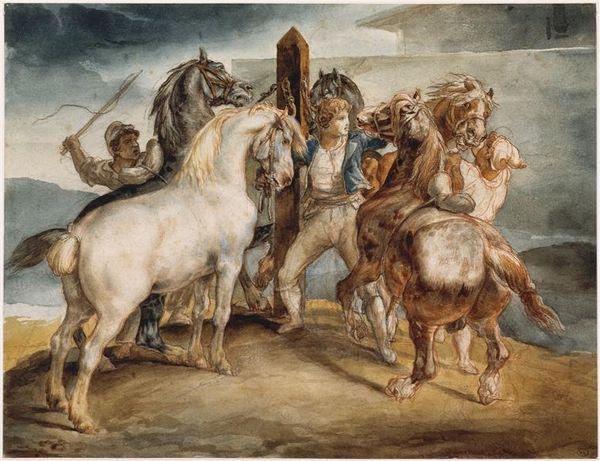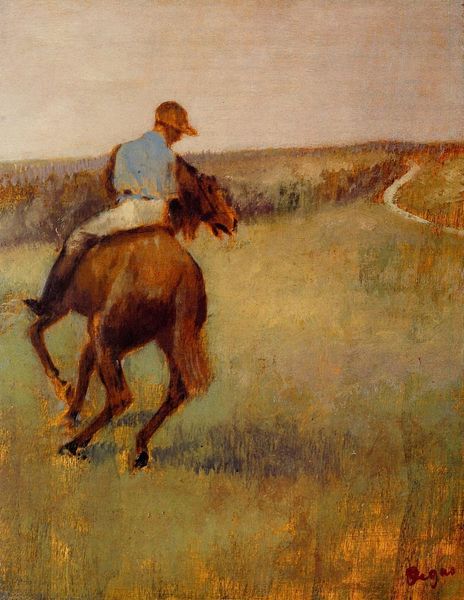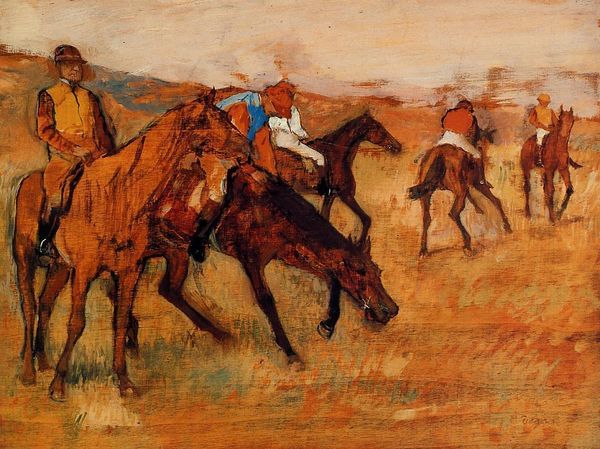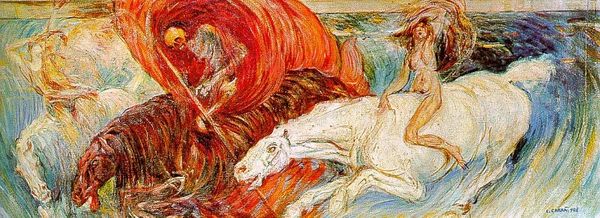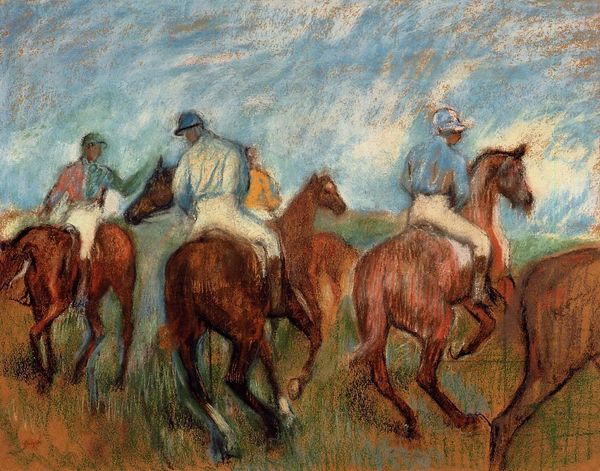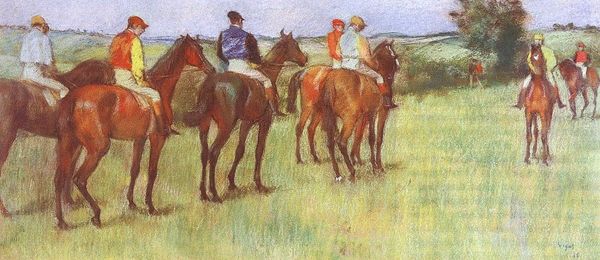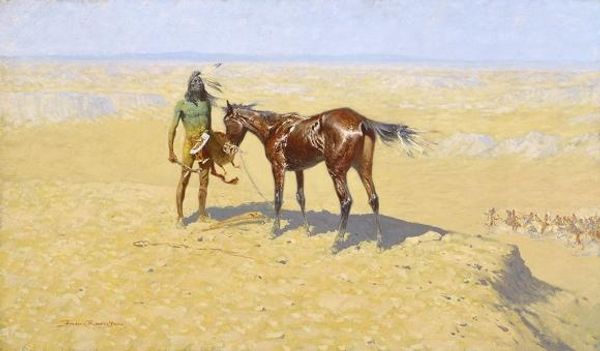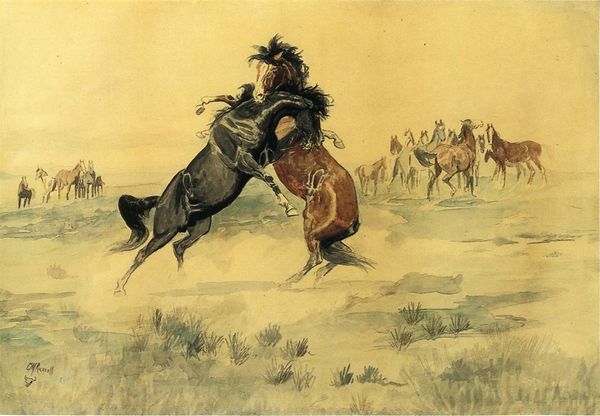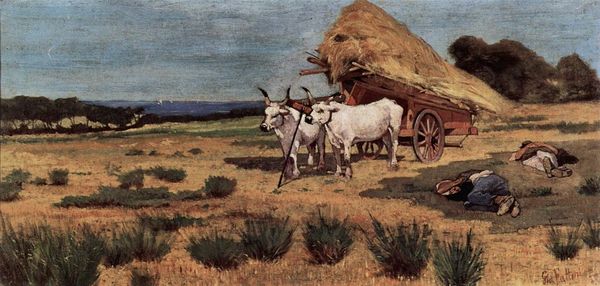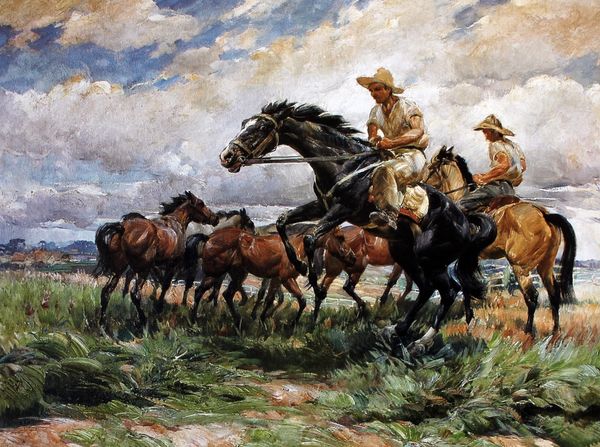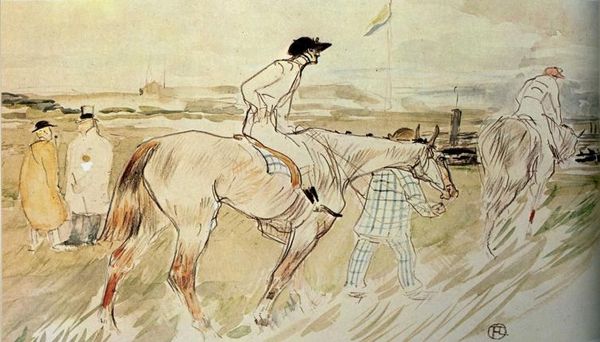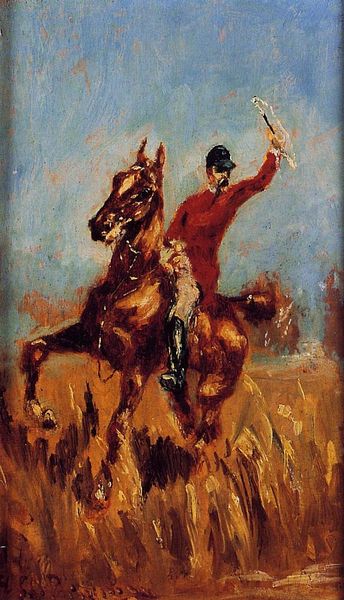
Dimensions: 79.5 x 126 cm
Copyright: Public domain US
Frantisek Kupka painted Ballad of Epona in an unknown year, and it presents us with a scene of two nude women riding horses along a shoreline. This image from Kupka, a Czech artist working in France, draws on ancient Celtic mythology, specifically Epona, the goddess of horses. But it reinterprets this myth through a decidedly modern lens, influenced by the burgeoning Symbolist movement of the late 19th century, which sought to represent absolute truths through evocative images. Kupka made this image during a period when the nude body and classical themes were being re-evaluated in art schools and institutions. The image might therefore be seen as a progressive commentary on the traditional artistic canon. To fully grasp its complexities, we need to delve into the cultural and institutional context of the early 20th century. Research into the artistic and social climate of the time, including period writings and art criticism, can help us understand how Kupka's work both reflected and challenged the norms of his era. Art is not made in a vacuum, and its meaning is always contingent on the social and institutional contexts in which it is created and received.
Comments
No comments
Be the first to comment and join the conversation on the ultimate creative platform.

